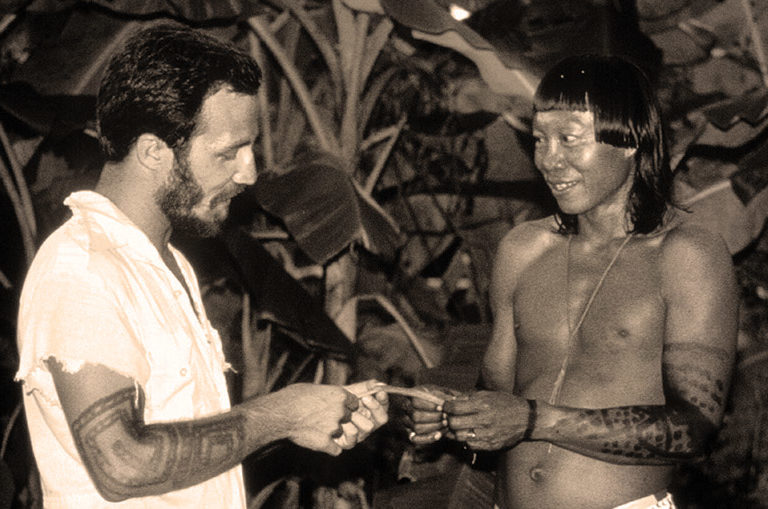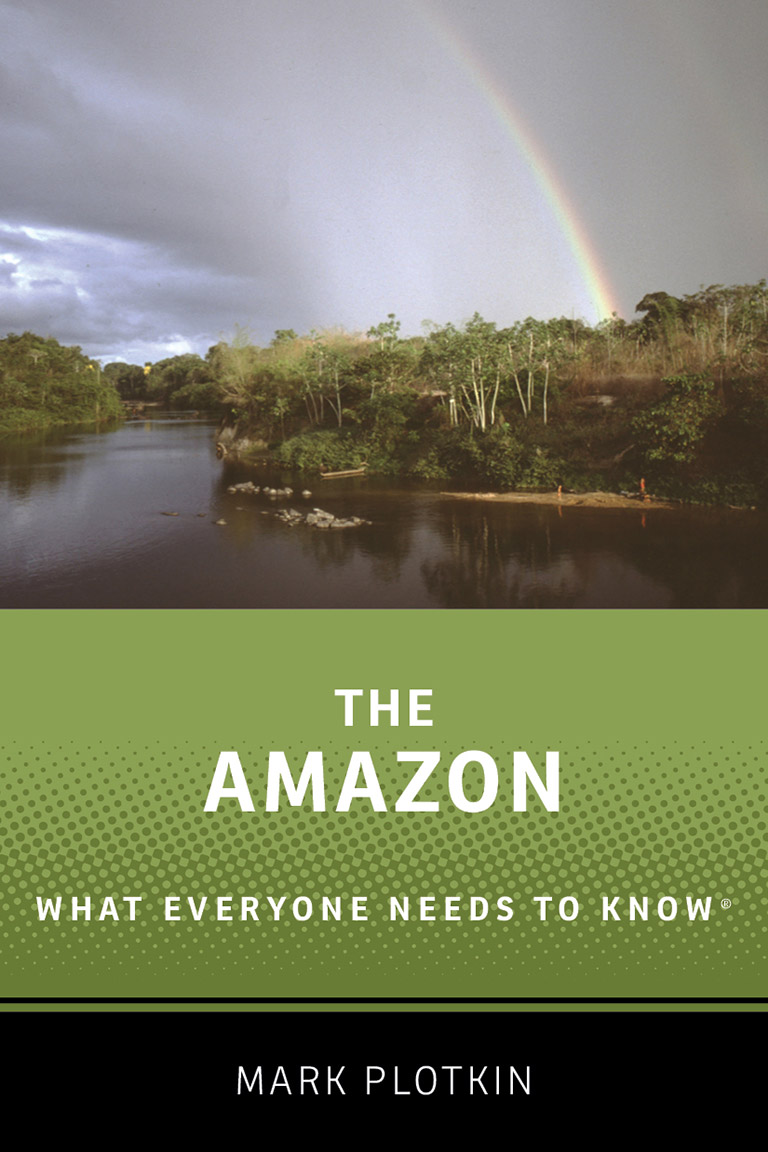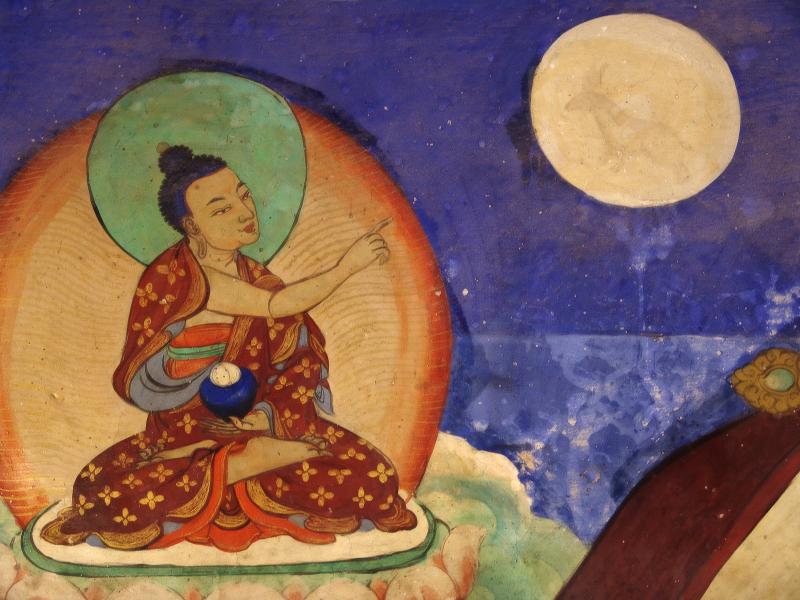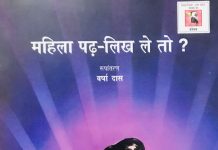As Earth’s largest rainforest, the Amazon is the planet’s single greatest repository of biodiversity, houses the largest number of uncontacted indigenous tribes, and is home to the world’s mightiest river. It is also the engine that generates rainfall that sustains regional economies, sequesters upward of a hundred billion tons of carbon, and helps prevent hurricanes from striking the east coast of South America — services worth hundreds of billions of dollars annually to humanity.
Yet the Amazon faces a range of dire threats, including rising deforestation and anti-environment policies in Brazil, widespread fragmentation and degradation, and the effects of climate change which scientists warn could tip the wet rainforest ecosystem to something much drier. Large-scale Amazon die-off could be devastating to the planet.
A new book, The Amazon: What Everyone Needs to Know succinctly summarizes these issues but also adds important context, color, and factoids on why we should care about the fate of the Amazon.
The Amazon: What Everyone Needs to Know is written by Mark Plotkin, one of the world’s most foremost experts on ethnobotany and the co-founder of the Amazon Conservation Team, a non-profit that works with indigenous communities to conserve rainforests in the Amazon and northern Colombia. In the early 2000s, Plotkin and the Amazon Conservation Team pioneered the use of GPS mapping, Google Earth, and other technologies to help tribes secure land rights and protect their ancestral forests.
Plotkin talked about his new book during a May 2020 interview with Mongabay’s founder Rhett A. Butler.
What prompted to write this book at this point in time?
The book was not originally my idea. Oxford Press publishes a well-regarded series, “What Everyone Needs to Know.” They choose an important topic—subjects range from cybersecurity to climate change to the nation of Venezuela—and then contract an expert to explain the issue in a Q & A format. The aim is to provide a readable and reliable account to a wide audience. Oxford approached me about this project two years ago, and I readily accepted.
Of the forests of material available on the Amazon, much of it ranges from slightly wrong to wildly incorrect. This is why so many people—including me—rely on Mongabay for trustworthy information. I hope this new book will serve a similar role.
What is something new that you learned while researching this book?
That crabs have been found living in rainforest canopies. That the Brazilian city of Santarem sits atop a 2 square mile terra preta site. That there are three species of electric eels living in Amazonia, rather than just one. That Amazonia harbors more species of fish than the Congo, the Mississippi and the Nile combined.
Despite the terrible onslaught of “development” and destruction, the Amazon remains a place of mystery and wonder. Just as I was finishing the book, an international team of researchers in the Jari Basin of Brazil found a tree almost 100 feet taller than any other known specimen. In a well-known world in which records tend to be broken by inches or seconds, this is truly mind-boggling!
And no one who studies the Amazon – no zoologist, no botanist, no ethnobotanist – thinks that there is anywhere near nothing new to be learned or found-
What is the top thing you hope people take away from your book?
That there remains much to be learned and appreciated in the Amazon. Look, electric eels have been studied since the days of Linnaeus, which is over 250 years ago. But only last year did we determine that 1) there are actually three species in Amazonia, rather than one; and 2) that electric eels hunt in packs, not just individually. In addition, they are being studied to help design small batteries, which can be implanted, to power medical devices in the human body. So much remains to be learned and gained, but we forgo these options if we continue on this path of greed and destruction.
When I entered the environmental field in the late 70’s, some said that we could not worry about rainforests until we dealt with overpopulation. Now, you have folks saying we can ignore rainforests because we have to focus on climate change. But it is all the same thing! Overpopulation drives forest destruction that drives climate change.
Yet another story related to both the book and the headlines. Coronavirus – COVID-19 – is the main story of the day. In the book, I discuss vampire bats and how anticoagulants in their saliva may lead to new treatments to prevent or treat strokes. The headlines brim with stories that trace this new and deadly virus back to bats. What is often overlooked is we did not contract this disease by being bitten by a bat – we got this disease when bats (and/or some intermediate host) were crammed into fetid cages in live animal markets, and the virus eventually made its way to humans. Our failure to respect and properly steward Mother Nature gave us a disease that is costing trillions of dollars and untold deaths. I recently published an editorial on this in the Los Angeles Review of Books: Coronavirus and Conservation: Preventing the Next Pandemic.
There exists a potential upside to this terrible situation: bats carry a multitude of viruses. We must cease our abusive practices, which are unspeakably cruel to the animals (especially bats, which eat tons of mosquitoes and serve as important pollinators). What we SHOULD do is carefully study bats to learn how they manage to fend off these deadly diseases. We also need to STOP chopping down the rainforest, because doing so drives climate change and brings people into every more contact with deadly pathogens. Even though the terrible virus stories we all read about (COVID, SARS, Ebola) originate in Africa and Asia, Dr. Chris Walzer at WCS (featured in a recent and insightful Mongabay story) tells me that there are just as many viruses in Amazonia.
Remember the old Parkay Margarine commercial whose tag line was “It’s not NICE to fool Mother Nature”? Well, it is much stupider and ultimately self-destructive to ABUSE Mother Nature!

You’ve been working in the conservation realm for a long time. What are the biggest changes you have seen in the sector over the past three decades?
The great biologist E.O. Wilson recently wrote that the most effective way to “save the world” was to ensure that half of it is protected. What few realize is that – in the Brazilian Amazon, for example – that is already the case, with 25% of the territory in protected areas and 25% in indigenous territories. The problem (obviously) is that this protection (in many parks, in particular) exists on paper.
I am often asked: in the Amazon, is the glass half-full or half empty. Of course – by definition, any glass that is half-full IS half-empty! The point here is that there exist many conservation successes and achievements, but many (if not most) are threatened by a myriad of factors: misguided policies, social inequality, lack of civil engagement, etc. Moreover, it is essential to note that many of these same challenges exist around the world, including here in the USA.
The simple answer to the question is that many more are aware of the importance of Amazonian conservation at the same time that many more threats are pressing in from all sides.
The fires in the Amazon attracted a lot of attention last year. Do you think this attention will prompt any meaningful policy changes in Brazil?
Like all countries, Brazil is a complicated place with many different constituencies. Certainly, the Amazon fires of 2019 (which are covered in a chapter in my new book) brought the issue of Amazon deforestation to a global audience in way that had not been the case since the late Adrian Cowell’s brilliant documentary “Decade of Destruction” from several decades ago. And many Brazilian colleagues and friends, from academics to indigenous leaders, are adamantly opposed to rainforest destruction to make way for more cattle ranching and agribusiness. As in the US – where we are seeing shameful anti-environmental action – it is difficult to foment change when top leadership sees wise environmental stewardship as something to oppose.

There’s increased talk about the Amazon approaching a tipping point where the rainforest could transition to a drier ecosystem. What can the world do to avoid this fate?
The answer is obvious but the implementation is difficult. What must be done? Protect protected areas. Respect indigenous rights. Reforest. Focus development activities on degraded lands, of which there are plenty in Amazonia. I firmly believe that there are enough deforested and degraded lands to grow all the food, raise all the cattle and produce all the timber that is needed!
We’ve long heard that indigenous cultures and knowledge are disappearing faster than forests. Is this still the case in the Amazon?
One of the environmental movements’ major successes – in partnership with indigenous colleagues – has been to successfully convey the concept that indigenous peoples were and are (to a large degree) the original conservationists. Beginning about 30 years ago, people could see in aerial or satellite photographs that the indigenous lands tended to have more and better forest cover than adjacent territories.
However, as indigenous peoples become more integrated with the outside world –thank you, WhatsApp!- there is a rapidly growing need for cash – for cellphones, computers, iPads, you name it. This need for money is understandable but puts additional pressure on our indigenous colleagues to somehow monetize their life and territories in a way never seen before (in the Amazon, at least).

And why should we care that these cultures are being lost?
Among other analogies, indigenous peoples have been called the environmental “canaries in the coalmine.” In Alan Ereira’s classic film about the Kogis 30 years ago, they were asking the outside world (who they refer to as “Little Brothers”) what the hell we were doing since their glaciers were melting. We ignored this at our peril – climate change would have been easier, less expensive and less disruptive to manage if we had listened to them way back then!
Nobody here at Amazon Conservation Team is simplistic enough to believe that indigenous peoples anywhere in the world are “noble savages,” who always know best and who always do the right thing, environmentally or otherwise. At the same time, all of us who have the good fortune to visit, live or work with traditional peoples in Amazon are undeniably struck by how exceedingly well these people know and use the forest, whether it means making and using a hunting bow or identifying which bee pollinates which orchid. Want to protect the rainforest? Help the people that live there protect both their forest and their traditional culture!
How did you chose the cover photo on your new book?
One of the reasons I decided to undertake this project is Oxford’s Press goal to get the information into as many hands as possible but keeping the book price low: when is the last time you bought a new book for 17 dollars? This approach, however, entails tradeoffs, one of which is there are no pictures in the text. As someone who has been photographing in South America for over three decades, I knew at the outset that it would be doubly difficult to convey the wonder of Amazonia without using photos. The only exception was the cover photo.
Imagine then the challenge: how do you portray /encapsulate Amazonia in a single image? Fish? Forest? Frog? Fire? Fungi? Floodplain? What do you show?
I decided to use an image from the northeast Amazon I took on the last day of my first major expedition there in 1982. The photo shows the Sipaliwini River emerging from pristine rainforest and sweeping past an indigenous village in which I am standing.
There are several “easter eggs” embedded in the photo. On the far left – in the primary forest – you can see the yellow flowers of a Tabebuia tree, which is highly valued for a variety of medicinal purposes. In the foreground, you see Cecropia trees, indicative of the recent presence of indigenous gardens. A rainbow appears above the forest at the upper right – but if you look carefully, you can see that it is a double rainbow. And – finally – if you look even more carefully, you will see indigenous children playing, under the double rainbow!
Rhett Butler is the founder and CEO of Mongabay. Rhett founded Mongabay out of his passion for wildlife and wild places. He has traveled widely in the tropics and enjoys photography, hiking, and scuba-diving.
This article is republished from The Mongabay under a Creative Commons license. Read the original article.















